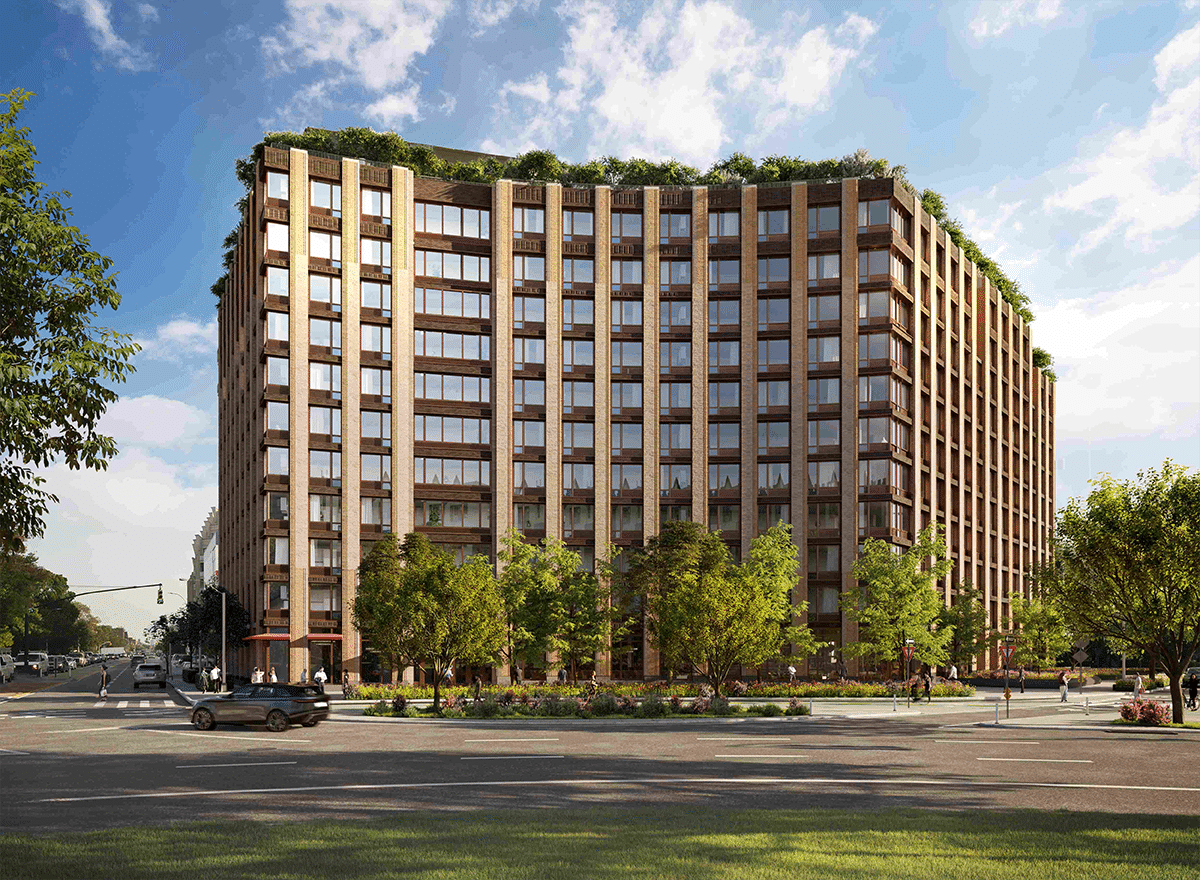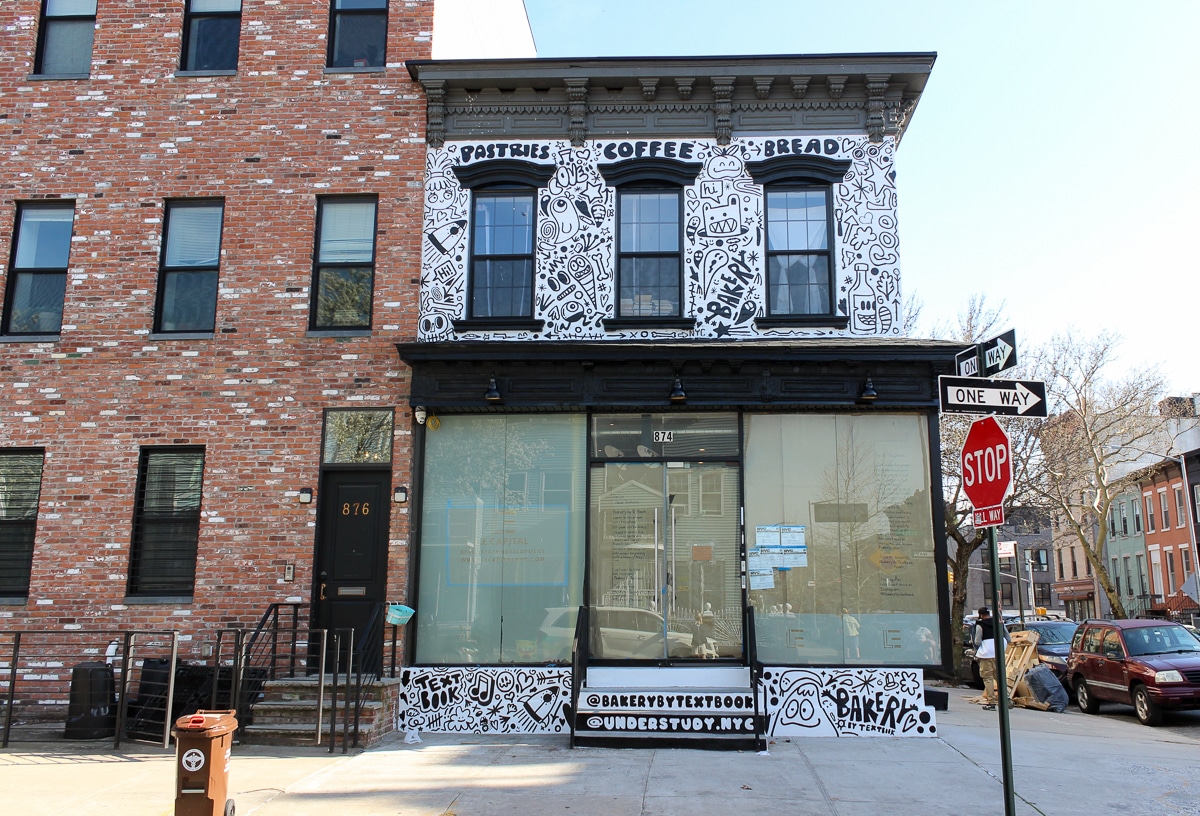Stuyvesant Heights Mansion: Under the Big Tent, Part 1
Read Part 2 and Part 3 of this story. One of Stuyvesant Height’s most iconic houses has a tale to tell. It’s a story of success, money, faith, family, tragedy and spite. Followed by a bit of inspiration, mystery, good deeds, and benign neglect. A lot for one property to hold, but this is some…

Read Part 2 and Part 3 of this story.
One of Stuyvesant Height’s most iconic houses has a tale to tell. It’s a story of success, money, faith, family, tragedy and spite. Followed by a bit of inspiration, mystery, good deeds, and benign neglect. A lot for one property to hold, but this is some property. 87 MacDonough Street is one of Bedford Stuyvesant’s jewels. In a neighborhood that doesn’t have too many of its old freestanding villas and mansions left, this house remains one of the largest, and one of the best architectural examples of Brooklyn life when life in the suburbs meant a journey to Stuyvesant Heights.
The mansion was built in 1863 for William A. Parker, a successful dealer of hops and malt. The production of beer in Brooklyn was one of the most successful industries in the city, and Parker’s customers would have only been short distances away, in Bushwick, and other nearby neighborhood breweries.
By 1865, Parker could enjoy the company of another hops and malt merchant, as his friend Chancellor H. Brooks bought the Betts Mansion next door, built just a few years before, in 1861, by Charles Betts, the secretary of the Brooklyn Railroad Company, and one of the largest landowners in the area.
A few blocks further down MacDonough Street, between Lewis and Stuyvesant, one of Bushwick’s successful brewmeisters built his own large suburban villa. (Today this is the Akwaaba Mansion B&B.) But, like many wealthy people in the cycle of life in Brooklyn, Mr. Parker did not stay in the spacious mansion he had built for very long, and the house would pass to James McMahon.
James McMahon was a self-made millionaire who made his fortune in the transportation business, arranging the transport of grain and other commodities along the rail lines between New York, Philadelphia, and Baltimore, and was described as a shipping merchant. The son of Irish immigrants, he was a pillar of the large Irish community in Brooklyn.
In 1850, the Irish Immigrant Society, an organization founded to protect the interests of the Irish immigrant community, established the Emigrant Industrial Savings Bank, the oldest savings bank in New York City. By 1893, James McMahon is listed as president of the bank. By 1900, they had $57 million in assets and were the largest savings bank in the United States.
James McMahon was also a director of the People’s Trust Bank in Brooklyn, and was appointed to the Brooklyn Board of Education, and was a leader in the Democratic Party. In addition to that, he was very active in Catholic charities and business, as was described in the Brooklyn Eagle as the leading lay member of the Catholic Church in this city.
He lived in the large Italianate and Second Empire mansion with his wife and five children; three sons and two daughters. Surrounding the property was about an acre of grounds, with a carriage house facing Macon Street, behind the house. Newspaper accounts wrote of the gracious appointments of the mansion, with large parlors, a library, and a billiard room on the third floor where Mr. McMahon could escape the rigors of his day.
In April of 1891, the McMahon household was still taking joy in the recent wedding of Charles, the eldest son. The eldest daughter, Mary Louise, had recently forsaken her money and privilege and taken the veil, becoming a nun in an order that ministered to the poor of the city.
And then, on April 20, the second son, James V. McMahon was found dead in his room at the exclusive Manhattan Club in New York. The initial verdict was suicide. The investigation into his death would reveal that he had written fraudulent prescriptions, and obtained lethal amounts of laudanum and morphine, and had taken the pills.
He left no note or explanation. The papers would write that James, Jr. was a youth whose only object in life was self-enjoyment. They told of his father’s indulgences, and frequent funding for Junior’s many failed business endeavors.
His family defended him saying that he was frail and dyspeptic, given to nervous anxiety, and was very delicate, with weak lungs, according to his brother Charles, who was an attorney at Emigrant Bank.
He would go on to say that his brother was brilliant, with a keen mind and great ideas, but not the constitution for steady work. However, other accounts, from his friends and acquaintances, painted a portrait of a spoiled rich boy who spent much of his time at the race track, at his club, and with his friends, a lavish spender of money.
Yet, both friends and family agreed that James, Jr. gave no indication of depression or desire to die. The police found scraps of paper in his room where he had practiced writing the prescriptions under the name Dr. McMahon, and the apothocary near the club reported that he had bought the drugs there.
After much deliberation, the coroner determined that the death had been accidental, due to James’ dyspepsia, and that he had been trying to self-medicate, and had overdosed. He wouldn’t have been able to be laid to rest by the Church, otherwise, as suicide is a mortal sin.
Although his parents had contributed mightily to the building and running of Our Lady of Victory Church, where the funeral was held, James, Jr. was not a member, or much of a churchgoer. This magnificent church, built by the McMahon’s and their wealthy Irish neighbors, would see a wayward son come home for the last time.
The McMahon’s story is not yet over, followed by the 1945 acquisition of the house by the Tent Ladies. The Tent Ladies? All in the conclusion, next time.
(Photo: Savebedfordstuyvesantblogspot.com)










I enjoy these stories. I have a little collection going of older folks who have been living in the area for 50+ years. When they bought, they were maids, accountants, bank tellers you name it. Now they are old, mostly unworried, mostly bemused by change. They love to tell about paying 7,000 dollars from some big old house. So it’s easy to miss out on how heroic they were. That was a lot of money. And most of the time the reactions were the same then as today: “you paid what for that!? But they did it. Courage tells you there is almost always a good story about why THEY did it. Stubborn, ambitious, lucky, an aunt who taught them everything they know. And work they faced. What it was like to try and collect rent. What it was like to own a 10 family house during the AIDS explosion and have know idea how it can or can’t spread (10 door knobs, 10 bathrooms, 10 bedrooms…) Tough broads -and they are almost all women- The men died or fell off the wagon a long time ago. As an owner of a few things in the neighborhood, I am the change now. I like to think about the sepia history they lived and how it was, as it is to me now, unknown.
If you really want to bring your resources to help the Tent contact the Historic MacDonough St Block Association. We are a group of new and long time residents who care just as much about the preservation of this building as you do.But more than that, we care about the people who have long built a spiritual and cultural legacy in our community. In spite of our efforts to gain assistance from the Historic Landmark Preservation Conservancy we have not received a response. pkafp@verizon.net
Me too, 11216! MM can give me a good reference! (I think).
11216, I perfectly understand their concerns. There’s another group of us, younger folks (although I’m getting up there) who are really proud of these older folk and their accomplishments, and want to help them keep their properties, and in this case, see if there are funds available to preserve and restore them, including the very neglected grounds. I daresay a group of us could be started up in a hot minute, of people called “The Friends of 87 MacDonough” or somesuch, who would volunteer to clean up the yard, plant some flowers, do some work around the exterior, and help them get funds, which are available with some work seeking them out, for the house. I particularly hate to see places like this deteriorate until the Tent Ladies all die out, and the city gets the place, and it goes to some deep pocketed person who has the money to do it up, but perhaps not a sense of history that should go with it. We are, after all, only stewards of properties like this.
PS: I am dying to hear about tent ladies. I know about tent caterpillars…but that’s a different thing I’m sure.
I wonder if they know how much we would treasure just a peek. But, there is such a strange tension when a neighborhood is on the cusp. There is a mix of older folks, full of pride, low on money, wanting to flaunt the beauty of their space but a little suspicious of the interest; and newer transplants with a little more money who love the architecture but not necessarily the lingering ills of the hood. Both sets advocate change but the reality of change has different outcomes for each group.
Montrose, I need to contact you about a course I am teaching this semester. Can you email me at westgate63@yahoo.com?
11216 – Me too!!!
11216, PLEASSSSE take me with you.